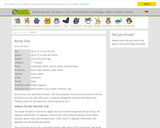
Animal fact sheet
- Subject:
- Life Science
- Zoology
- Material Type:
- Reading
- Date Added:
- 10/30/2018

Animal fact sheet
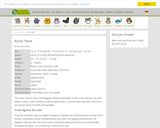
Animal fact sheet

This animation shows the Arctic sea ice September (minimum) extents from 1979-2016. Accessible from http://nsidc.org/cryosphere/sotc/sea_ice.html
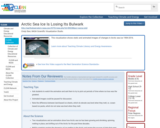
This visualization shows static and animated images of changes in Arctic sea ice 1984-2016.

See the many birds that spend their summer in the Arctic in this video segment from Nature.
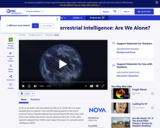
This video segment adapted from NOVA features a variety of scientific perspectives on the age old question, "Are we alone in the universe?" Animations make vivid the improbability that we could intercept a radio wave signaling extra terrestrial intelligence.

Students investigate the intelligence of dinosaurs by comparing the relative size of brain and body mass to living animals. Students plot the living animals to determine a general relationship of brain and body mass and then use that relation to interpret a range of dinosaurs. The activity gives students practice in graphical data comparison and other methods of data analysis. Students also investigate how well this method works and what weaknesses it might have.
(Note: this resource was added to OER Commons as part of a batch upload of over 2,200 records. If you notice an issue with the quality of the metadata, please let us know by using the 'report' button and we will flag it for consideration.)

Student will watch the two video about area and perimeter. After they will construct their own pieces of each from graph paper. They must create their own animal within the graph paper. They will count the squares for the proper area and count along the outside for perimeter.
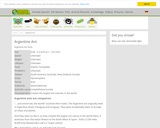
Animal fact sheet

This resource is a video abstract of a research paper created by Research Square on behalf of its authors. It provides a synopsis that's easy to understand, and can be used to introduce the topics it covers to students, researchers, and the general public. The video's transcript is also provided in full, with a portion provided below for preview:
"Deep-sea hydrothermal vent ecosystems host an array of macrofauna, including many invertebrates. These animals adapt to the extreme conditions by forging endosymbiotic relationships with chemoautotrophic bacteria. Phages, viruses that infect prokaryotes, can fundamentally affect endosymbiotic bacteria, but their specific roles in deep-sea vent endosymbionts are not yet known. A recent study utilized metagenomics, transcriptomics, and proteomics to examine the endosymbiotic phages associated with the deep-sea vent snail Gigantopelta aegis. These phages infected methane- and sulfur-oxidizing bacteria, and there was evidence of both lysogenic and lytic lifecycles. The genomes also showed evidence of an arms race between bacteria and phages, with the bacteria encoding defense systems like CRISPR–Cas to break down phage DNA and the phages encoding their own anti-defense mechanisms. The phages also had horizontally acquired auxiliary metabolic genes, which could benefit replication..."
The rest of the transcript, along with a link to the research itself, is available on the resource itself.

Pamela shows how to store arrays of objects - a very powerful tool for your programs.

Ernst Haeckel is a medical doctor, artist, philosopher, and naturalist of the late 1800s/early 1900s who beautifully and accurately depicted sea animal and plant life using color illustrations; you can find many examples of his sketches online through websites such as this one (Kuriositas, January 2012)and in his published works like Art Forms of Nature (1899). He promoted Darwin's theory of natural selection and created many words in the study of biology such as phylogeny and protist. I can see his work being used to inspire student observations, which are the basis of scientific discovery and study and as a supplement within specific units of biology including classification and evolution studies. I can also envision them being used during curriculum development within a professional development setting for teachers or a collaborative project integrating art and science instruction.

How humans have shaped plants and animals through artificial selection and domestication.

This course teaches simple reasoning techniques for complex phenomena: divide and conquer, dimensional analysis, extreme cases, continuity, scaling, successive approximation, balancing, cheap calculus, and symmetry. Applications are drawn from the physical and biological sciences, mathematics, and engineering. Examples include bird and machine flight, neuron biophysics, weather, prime numbers, and animal locomotion. Emphasis is on low-cost experiments to test ideas and on fostering curiosity about phenomena in the world.

Animal fact sheet
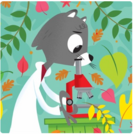
Based out of Washington State University, Dr. Universe teams up with professors, researchers, and experts in the field, to tackle big questions. Explore animated video answers to questions posed by curious questions from students in Washington and around the world. Videos created in partnership with Northwest Public Broadcasting. Though not openly licensed, content is free to view online and listen to via podcast.
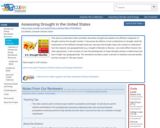
This easy-to-understand video animation describes drought and explains the different categories of drought used by the drought monitor. It discusses the effects of and contributions to drought, what the implications of the different drought levels are, and puts the drought maps into context to understand how the impacts vary geographically (e.g. drought in Nevada vs Kansas - one could affect tourism, the other agriculture). It also touches on how the development of maps/drought severity is determined and how it might vary geographically. The animation provides a basic overview of statistics and percentiles and the concept of '100 year events.'

This resource is a video abstract of a research paper created by Research Square on behalf of its authors. It provides a synopsis that's easy to understand, and can be used to introduce the topics it covers to students, researchers, and the general public. The video's transcript is also provided in full, with a portion provided below for preview:
"Research is increasingly showing the impact of the microbiome -- the diverse microbial communities living within the gut -- on human health. But, _when_ and _how_ is the microbiome established? Two opposing hypotheses have been put forward. For over a century, the prevailing thought has been that the human fetal environment is sterile and that microbes are acquired during and after birth. If this view is correct, the microbiome of infants born via C-section should differ from those born vaginally. Recent studies using molecular techniques, however, suggest that bacterial communities may be present in the placenta, amniotic fluid, and the baby’s first stool. They posit that the acquisition of the gut microbiome, therefore, begins _in utero_. If this is the case, delivery method should have less of an effect on early microbiome assembly..."
The rest of the transcript, along with a link to the research itself, is available on the resource itself.